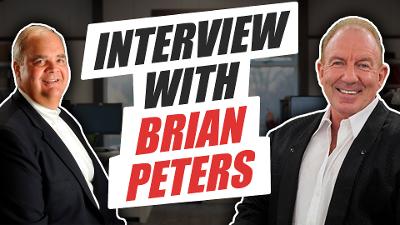“Think of this, what if you can guarantee that you will never lose any money ever again, would that be a good benefit to have?”
Anytime you have cash value in your life insurance policy, you have a contractual right that allows you to borrow against that cash value. Anytime you want. For whatever reason. Two reasons that we think make a lot of sense to borrow against your cash value are number one, to make a major capital purchase. Major capital purchases are things that you can’t pay in full using your regular monthly cashflow. And the second reason is to take advantage of an investment opportunity.
Let’s take a look at the mechanics of how a policy loan can work for a major capital purchase. As you pay your insurance premiums, three things increase your cash value, your death benefit and your access to capital. When you take a policy loan against your policy, you’re not taking money from your policy. It’s a collateralized loan, very similar to how you access equity in your home. You’re not taking money from your home. You’re putting a lien against your home and the same way you’re not taking money from your policy. You’re putting a lien against the cash value in your policy. As you make policy loan payments, you’re making the payments directly to the insurance company to decrease that lien on your cash value. This is going to free up cash that you can access again in the future.
Notice that your cash value continues to grow even while you have a loan against it. This is where you get to experience the miracle of uninterrupted compounding of interest, even while you’re using your money. It’s as if your money is in two places at once, because it literally is. Let’s face it. One of life’s greatest financial frustrations comes from the lack of access to capital when you need it most. We saw this a lot during the 2020 pandemic. If you’re a business owner and you’ve plowed all of your profits back into your business, you experienced the frustration of not having access to your capital or control of your money when you needed it most.
Let’s take a look at how policy loans could work to take advantage of investment or business opportunities. One main difference between a bank loan and a policy loan is that there are no restrictions for the purpose of the loan. There’s no income check. There’s no credit check and there’s no inventory check. Policy loans are collateralized against your cash value. Again, you’re not taking money from your policy, you’re placing a lien against your policy. Basically what this means is, if you die with a policy loan on your policy, your death benefit will be decreased dollar for dollar. For the amount of the outstanding loan. Loan payments are made directly to the insurance company to decrease that lien on your policy. But with every payment, your access to capital will increase.
Notice that the policy continues to grow even while you’re using your money because a policy loan is a contractual guarantee. You’re basically giving an order. You are telling the insurance company to go get you some money versus going to a bank and asking permission as a business owner. Would you rather give an order or have to ask for permission?
So let’s take a look at exactly how policy loans work. The first step is to build your cash value. After you have some cash value, you have options. One of those options is to tell the insurance company to distribute a loan to you, and they’ll place a lien against your cash value and distribute an interest-only loan. You could use that money to pay for a car, a wedding, an investment, whatever you want, you have the control of that money. Another thing you have control over is the repayment terms. You get to determine how much you pay back towards that loan. You can pay just the interest. You could pay more when your cashflow is flush and less when your cashflow is pinched, you have control.
We talked about policy loans and how you have use and control of your money, but there are so many additional benefits with cash value life insurance. Think of this, what if you can guarantee that you will never lose any money ever again, would that be a good benefit to have? What if, because you didn’t lose money, you had access to money so that you could take advantage of any stumbles, wonders or errors that the government and the markets make. What if you could earn uninterrupted compounding of interest on your money, even while you’re using it, would that be a good benefit to have? What if we can do all the things we just described and have reduced or eliminated taxes on our savings, would that be a good benefit to have? All of these benefits exist in cash value life insurance. There is no other financial product that offers all of the things that we just described.










